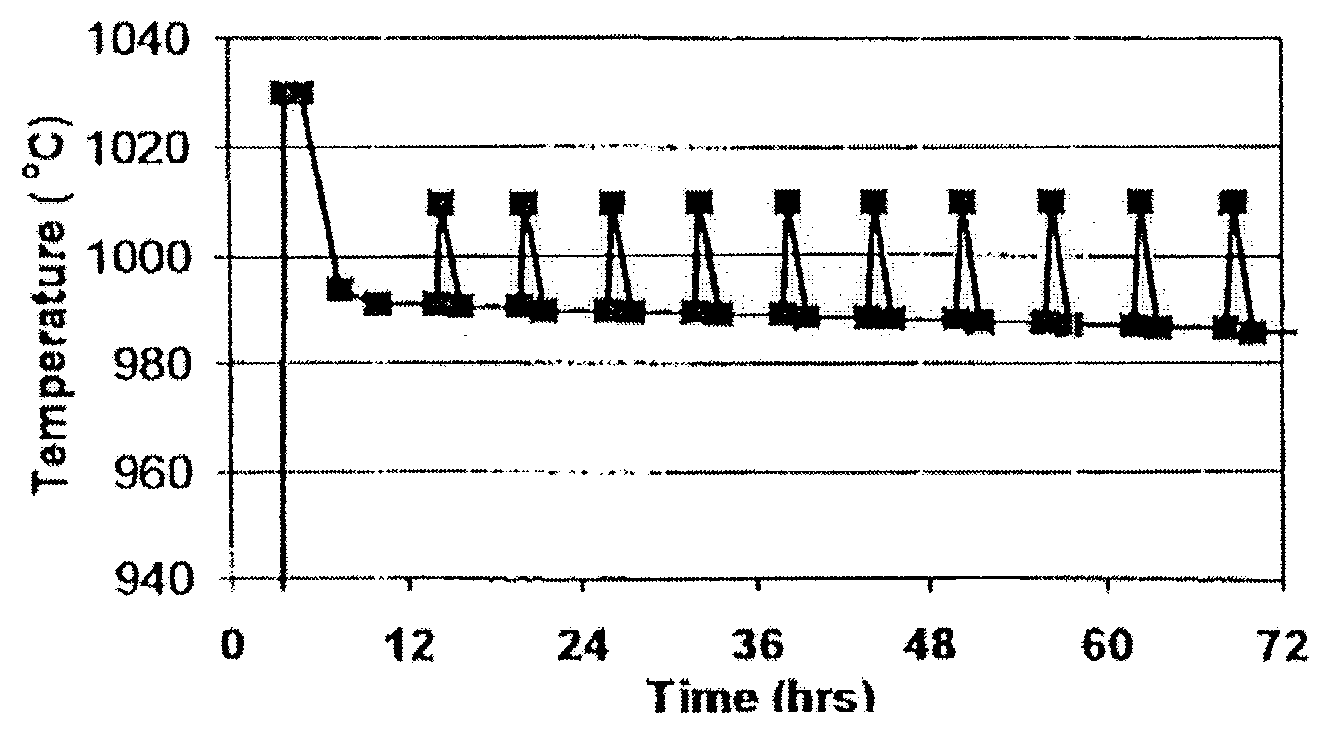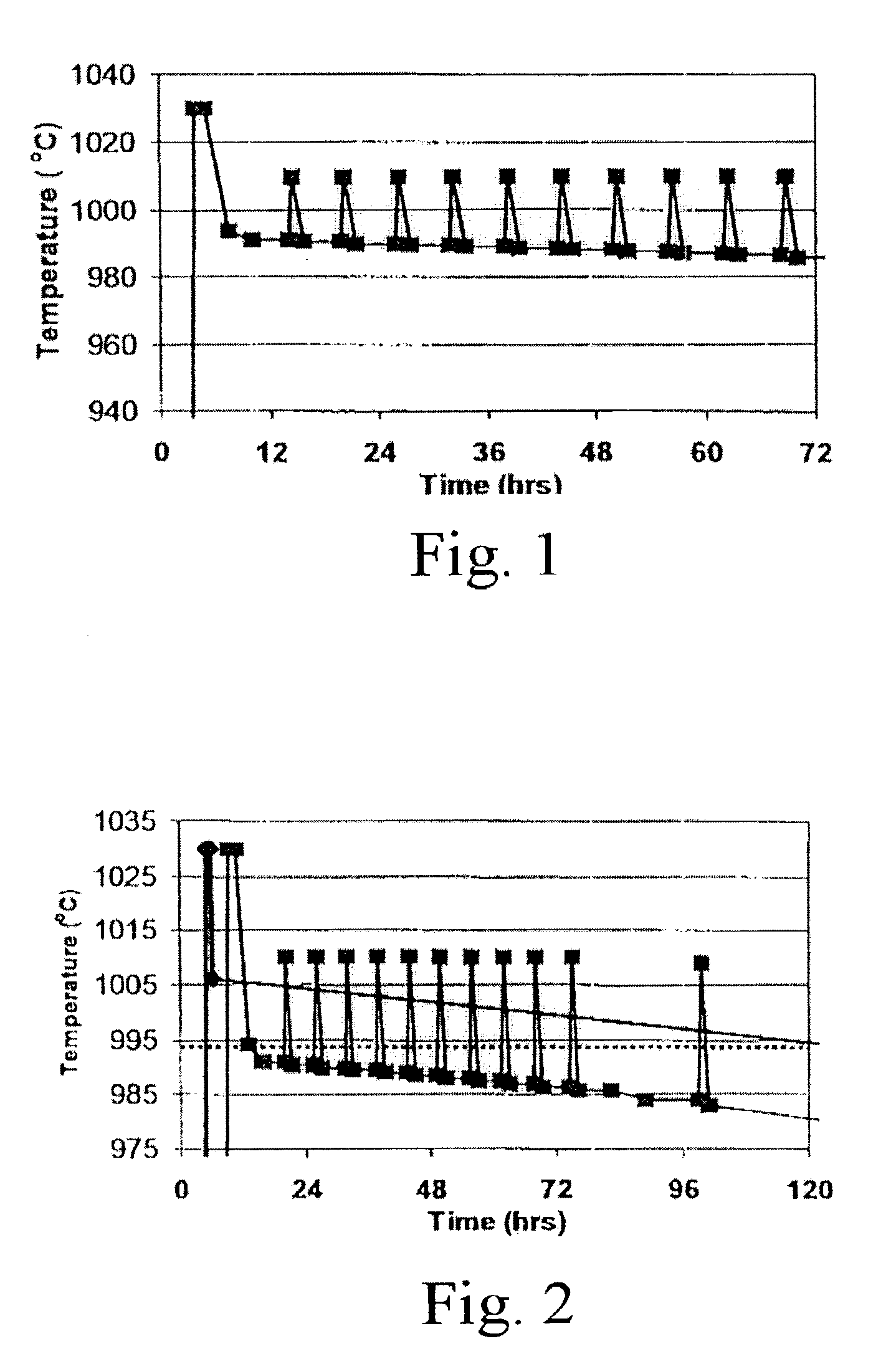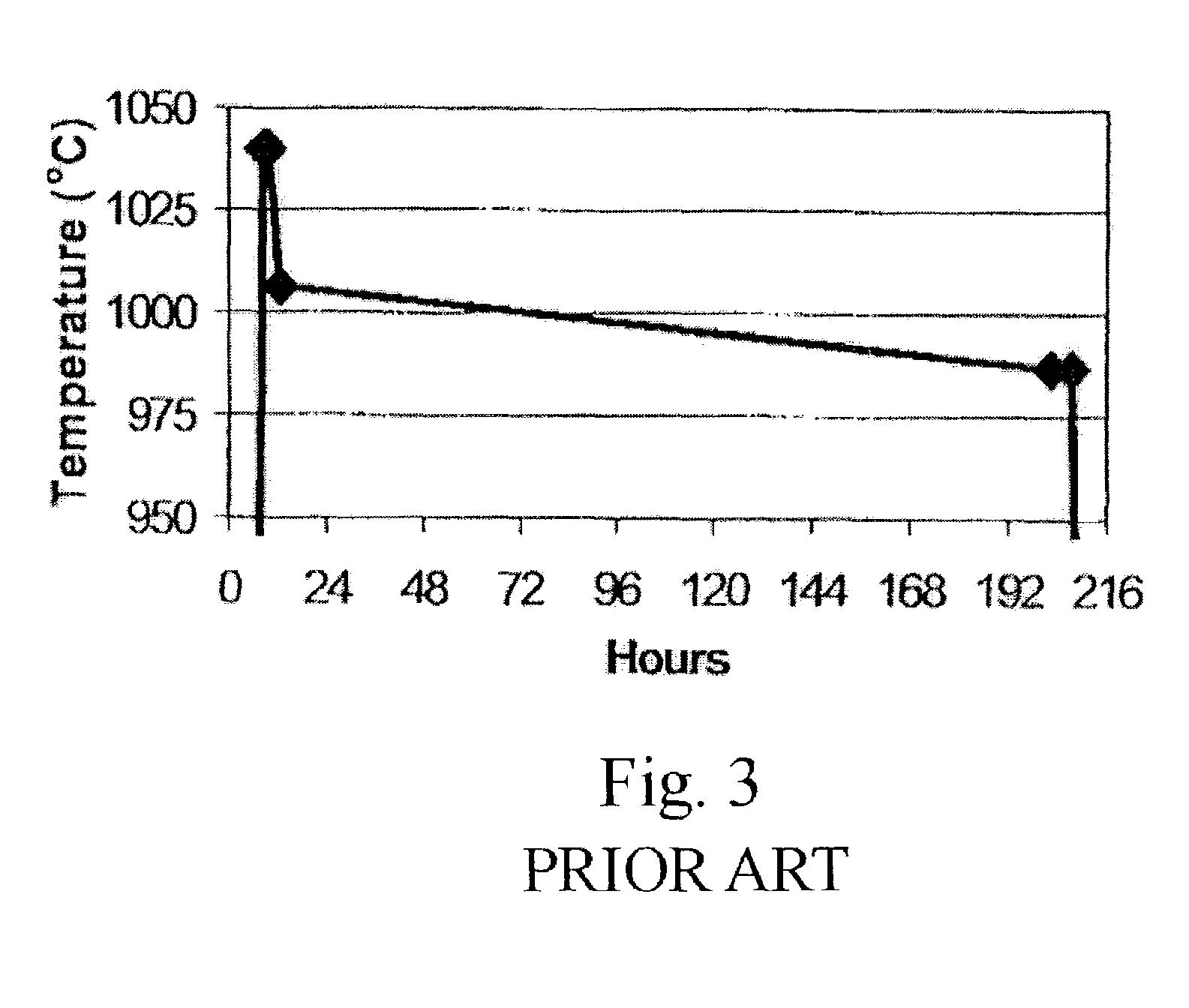Enhanced melt-textured growth
a superconducting crystalline structure and growth technology, applied in the growth process of superconductor devices, copper compounds, crystal growth processes, etc., can solve the problems of secondary nucleations, process failure to stop secondary nucleations once they begin to form, and reduce the superconducting efficiency of superconducting crystals. , to achieve the effect of enhancing the growth of melt-textured superconducting crystal structures and superior characteristics
- Summary
- Abstract
- Description
- Claims
- Application Information
AI Technical Summary
Benefits of technology
Problems solved by technology
Method used
Image
Examples
example 1
[0050]Thirty grams of commercially available powder of nominal composition Y1.254Ba2.127Cu3.127O7.635-x+0.25 wt % Pt was pressed at 5,000 lbs. in a 1.15″ cylindrical steel die. After forming, the powder was further compacted in a Cold Isostatic Press (CIP) to a pressure of 25 kpsi. The pellet was then sintered at 900° C. for 8 hours. A pellet density of >6.0 g / cc is optimum.
[0051]Following the sintering of the pellet, a seed material having the formula SmBa2Cu3O7-x (“Sm-123”) was placed on top of the dense pellet and placed in a furnace for heat treatment / growing. The growth furnace was heated to between 1025–1045° C. for 75 minutes to bring the pellet to a semi-molten state wherein substantially all the RE-123 was melted without melting the Sm-123 seed material. The furnace was then cooled below the peritectic temperature of RE-123 (approximately 1010° C.) to subject the pellet to a supercooled condition and to promote oriented growth starting at the seed. After 1–12 hours of growi...
example 2
[0052]120 grams of powder of nominal composition Y1.254Ba2.127Cu3.127O7.635-x+0.25 wt % Pt was pressed at 2,000 lbs in a hexagonal steel die. The die size resulted in a powder compact with about 1.78″ of material between parallel faces 1″ thick. After forming, the powder compact was further compacted in a CIP to a pressure of 25 kpsi. In this embodiment, the compact was not sintered prior to growth heat treatment.
[0053]A Sm-123 seed crystal was placed on top of the pellet and placed in a box-furnace for heat treatment / growing. The furnace was heated to 1030° C. at a rate 3° C. / min and held for 95 minutes followed by 1.5° C. / min cooling to 1006.2° C. The material was then slowly cooled until growth could be easily observed around 995° C.
[0054]A series of temperature spikes were programmed into the furnace controller each consisting of heating to >1014° C. at a rate of 0.85° C. / min and cooling back to growth temperatures below 995° C. at an initial rate of 0.45° C. / min with the coolin...
PUM
| Property | Measurement | Unit |
|---|---|---|
| peritectic temperature | aaaaa | aaaaa |
| peritectic temperature | aaaaa | aaaaa |
| temperatures | aaaaa | aaaaa |
Abstract
Description
Claims
Application Information
 Login to View More
Login to View More - Generate Ideas
- Intellectual Property
- Life Sciences
- Materials
- Tech Scout
- Unparalleled Data Quality
- Higher Quality Content
- 60% Fewer Hallucinations
Browse by: Latest US Patents, China's latest patents, Technical Efficacy Thesaurus, Application Domain, Technology Topic, Popular Technical Reports.
© 2025 PatSnap. All rights reserved.Legal|Privacy policy|Modern Slavery Act Transparency Statement|Sitemap|About US| Contact US: help@patsnap.com



